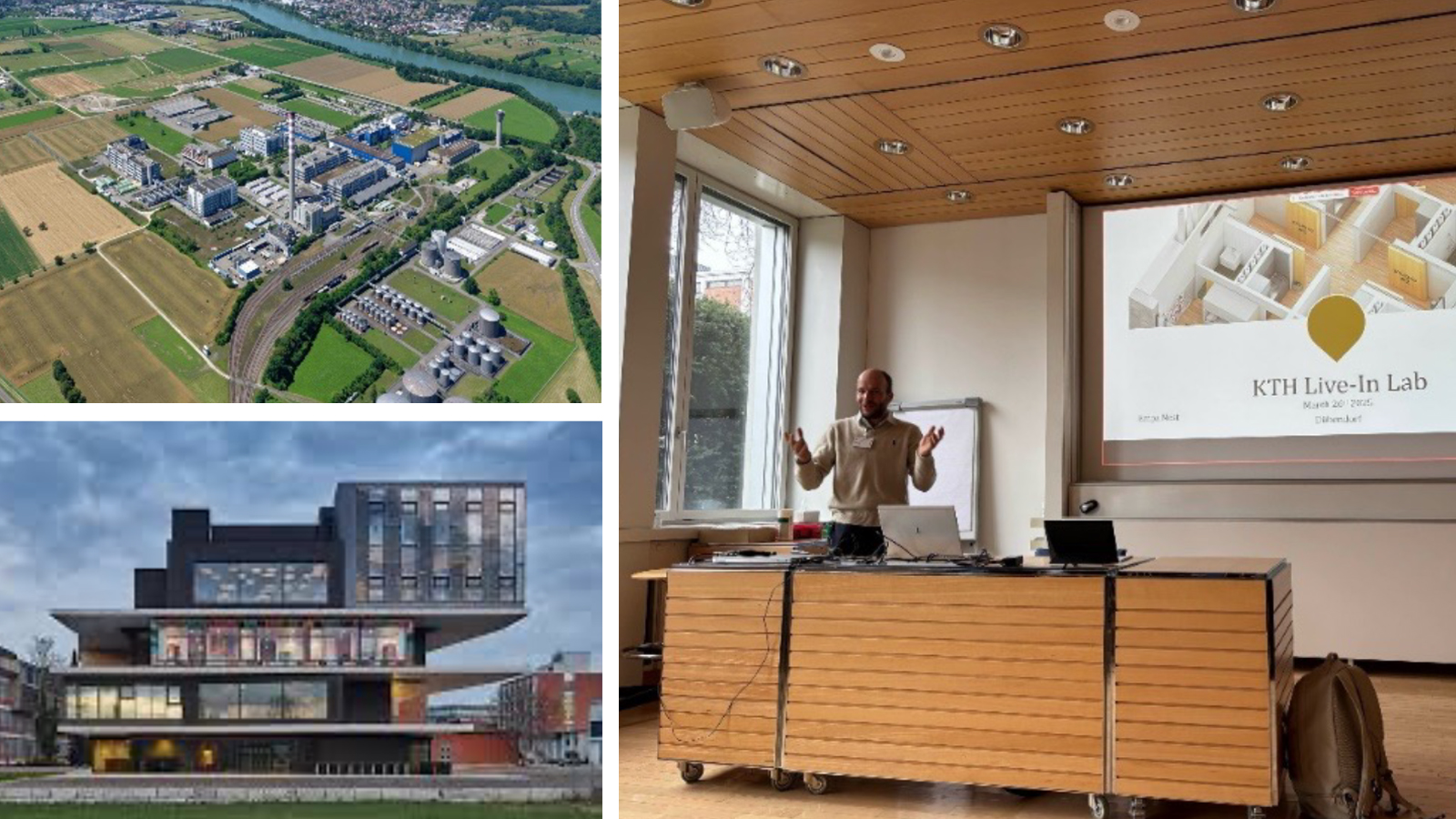KTH Live-In Lab visits the Empa NEST and Sisslerfeld Living Labs

How can we test solutions at the city scale and provide solutions for smart and sustainable cities? To move closer to an answer, Marco Molinari, Director of KTH Live-In Lab, recently traveled to Zurich to participate in a workshop on collaboration within living labs.
Living labs are emerging conceptual and experimental tools designed to investigate the complexity of future smart buildings and cities and provide invaluable support for the success of the energy transition and digitalisation in the building sector. However, there are still few working examples of living labs featuring smart building testbeds, and international collaboration is key to their success.
Marco Molinari, Director of the KTH Live-In lab, recently participated in a workshop held to initiate a collaboration on living labs, with site visits to the Empa NEST and the ETH-coordinated Sisslerfeld Living Lab .
The Empa NEST Living Lab, located in Dübendorf, Zurich, and the Sisslerfeld Living Lab, a district 50 km north of Zurich, are unique examples of research towards sustainable futures. The Empa NEST focuses on the building level, sharing many features with the KTH Live-In Lab, while the Sisslerfeld community targets research at the district level.
In the workshop, Marco Molinari presented how the KTH Live-In Lab is used to tackle multidisciplinary challenges. Together with Philipp Heer , Deputy Head of the Urban Energy Systems Lab, and Benjamin Sawicki , ETH Coordinator for Knowledge and Technology Transfer in the Sisslerfeld Living Lab, best practice examples, different governance models, research projects, and technical solutions were discussed.
– The workshop identified common strategic areas of research, including occupant-centric building operation and city-scale perspective, and resulted in a programmatic international collaboration on scientific exchange and knowledge transfer, says Marco Molinari.
Interested in knowing more? Contact us!
